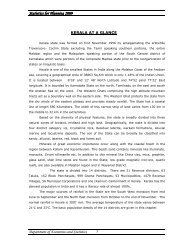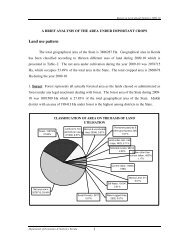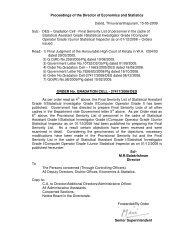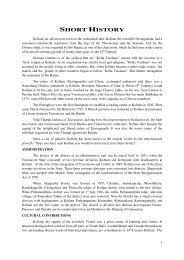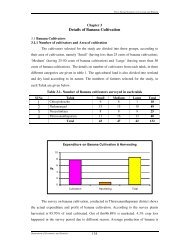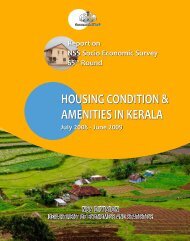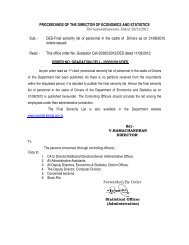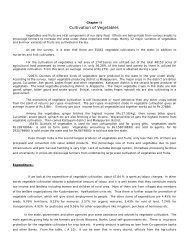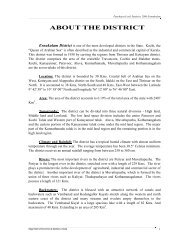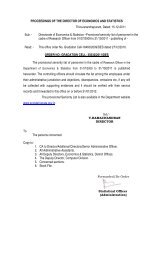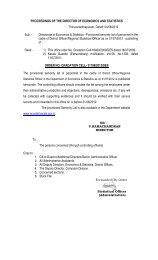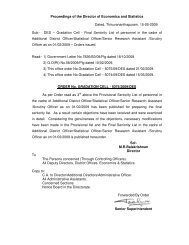BRIEF HISTORY - Government of Kerala
BRIEF HISTORY - Government of Kerala
BRIEF HISTORY - Government of Kerala
Create successful ePaper yourself
Turn your PDF publications into a flip-book with our unique Google optimized e-Paper software.
the Mappilas became desperate and committed acts <strong>of</strong> forcible conversion, looting <strong>of</strong> Hindus, arson<br />
and murder besides looting and destroying public <strong>of</strong>fices. The rebellion was crushed by hanging or<br />
deporting the rebels to the Anadman Islands, besides imprisoning large number <strong>of</strong> persons. Sri K.P.<br />
Kesava Menon who had intimate personal knowledge <strong>of</strong> the men and women connected with the<br />
rebelllion has expressed the view quoted from Kozhikode District Gazetteer that “there is no doubt<br />
regarding the genesis <strong>of</strong> the rebellion on 1921. It was born out <strong>of</strong> police repression. Its chief cause<br />
was the excessive violence used by the authorities to suppress the Khilaphat movement, and not any<br />
Jenmi-Kudiyar conflict or dispute regarding mosque. When police atrocities became unbearable, they<br />
gave up the vow <strong>of</strong> non-violence and decided to meet violence with violence itself”. After the<br />
rebellion, the political activity in Malabar came to a standstill till the starting <strong>of</strong> the Civil<br />
Disobedience Movement. The Payyanur Conference in May 1928 was presided over by Pandit<br />
Jawaharlal Nehru and it generated great enthusiasm among the masses and gave a fresh impetus to<br />
the activities to the activities <strong>of</strong> the Congress in Malabar. Volunteers from this district also<br />
participated in the famous Salt Satyagraha on 1930 and may courted arrest. The withdrawal <strong>of</strong> the<br />
Civil Disobedience Movement led to a peculiar political situation in the country. The younger<br />
general <strong>of</strong> the Congress men decided to form a Congress Socialist Party in 1934. This leftist group<br />
who subscribed to the community ideology was under the leadership <strong>of</strong> P. Krishna Pillai and E.M.S<br />
Namboodiripad. The rift in the Congress became very serious at its meeting in Shornur in October<br />
1934. In 1936, elections were held to the Madras Legislature base on the revisions <strong>of</strong> the <strong>Government</strong><br />
<strong>of</strong> India Act, 1935 and all the Congress candidates from Malabar were retuned to the provincial<br />
legislature. the volunteers <strong>of</strong> this district also participated in the Quit India Movement <strong>of</strong> 1942 and<br />
many persons were put behind the bars. Of the major political set up in Malabar, the most important<br />
was the emergence <strong>of</strong> <strong>Kerala</strong> Muslim League as a political party in the district under the leadership<br />
<strong>of</strong> Syed Abdul Rahman Bafaki Thangal, K.M. Seethi Sahib and C.H. Mohammed Koya. It is<br />
worthwhile to say here that the population <strong>of</strong> this district consists mostly Muslims. The people are<br />
pious and the background <strong>of</strong> the people tells the story <strong>of</strong> an arduous life in the midst <strong>of</strong> hills, boulders<br />
and rocks.<br />
4



